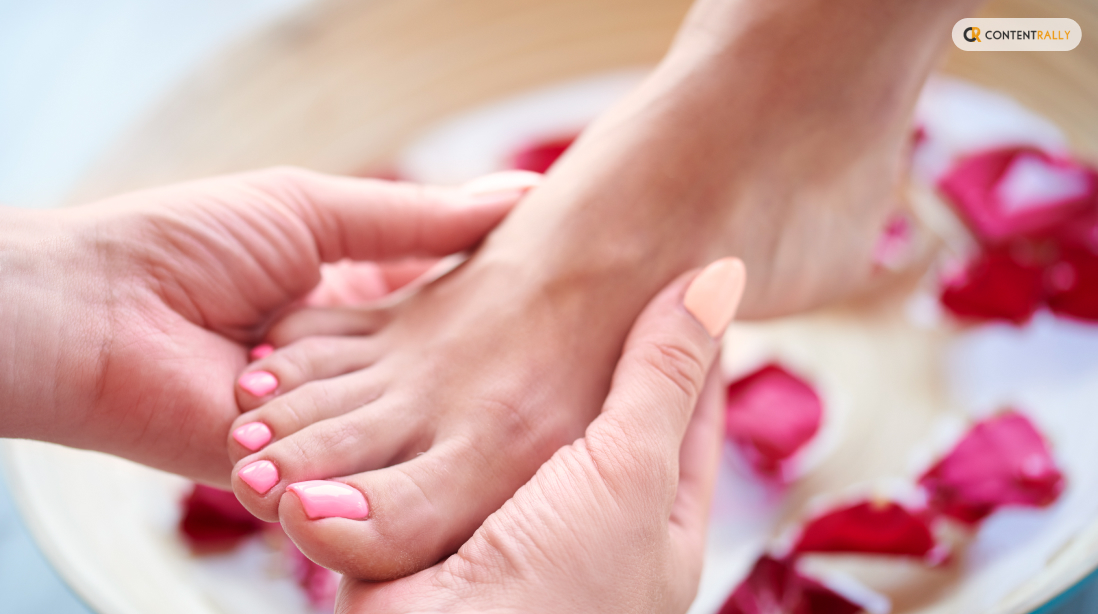Among all cosmetic treatments, pedicure is one cool thing. All of you know what is pedicure. So, I won’t go into the basic nitty gritty. However, we have to focus on all four segments of it equally. Certainly, nail and cuticle care are the most important.
The term pedicure is coined from the Latin “pedis,” meaning “of the foot,” and cura. Generally, when you speak of pedicure, it implies cosmetic pedicure. However, pedicures can be used for therapy and medical purposes, too.
In this article, we will discuss the perks of pedicure and the outcomes you expect of it. We will also suggest some tips for DIY pedicures at home. But first, let’s start with what is pedicure.
It is one of the beauty enhancers and, of course, maintaining better nail and foot hygiene. After all, the function of beauty is marinating better outer health.
How often do you get a pedicure?
A pedicure is a process of skin exfoliation. However, you may think of it as a skin treatment, too. It is a complete package of nail care, skin care, cuticle care, and dead skin removal.
Now, the question is, how often do you need this set of treatments?
The ideal gap is a month. In between these 30 days, the skin can regrow and regenerate. However, you must not overdo it. Firstly, the skin may feel irritated if pedicures become frequent.
But pedicure isn’t one straightforward process. You may frequently repeat switching your Polish grade. But don’t barge into the exfoliation process every time.
Types of Pedicures
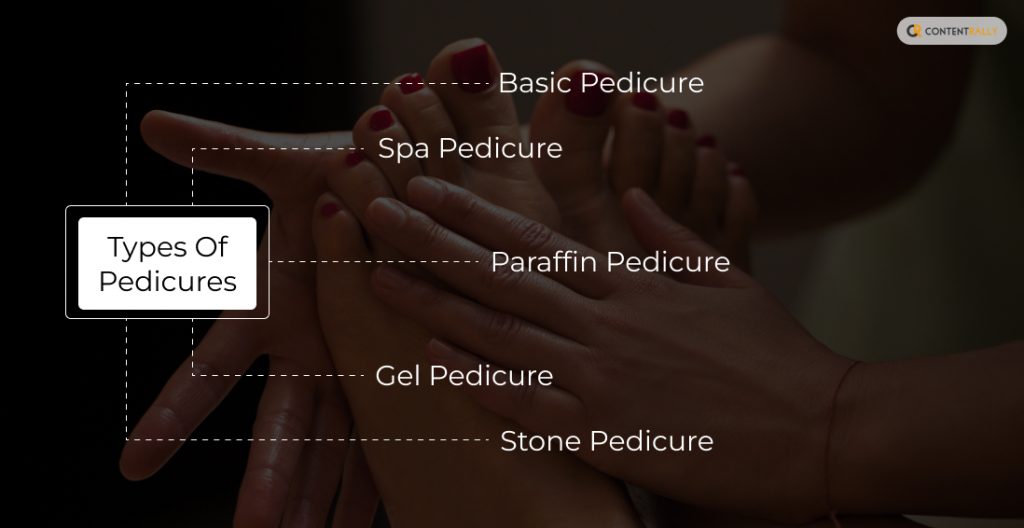
I already mentioned- a pedicure is not a simple process. So, it’s crucial to discuss the types of pedicures and their importance for your skin health and hygiene.
Basic Pedicure
It is the most common form of pedicure. It includes cuticle refining, shaping, and polishing. This package costs $35 and takes around 30 minutes.
Spa Pedicure
Next in line is a spa pedicure. It is a smooth process. People generally visit salons to get it done. First, it involves a deep cleansing and massage of the feet. The average cost of your spa pedicure could be $50 to $60.
But experts say getting it done from a good spa for better effect is better.
Paraffin Pedicure
If you want a hydrating nail and cuticle treatment, go for the paraffin pedicure. Most of you may know what is pedicure. But do you know about paraffin and gel pedicures? Most nail designs 2024 updates include gel treatment.
Firstly, a paraffin pedicure is a process where salon specialists use paraffin wax to reduce cracks and barriers. After that, they moisturize the feet. If you have cracked or frizzy skin, you must get a paraffin treatment once or twice a year.
Gel Pedicure
Here, nail treatment is the prime focus. Most importantly, experts curate your nails with UV or LED light after applying builder gel. But what is builder gel? It is a natural viscose gel base that increases nail strength, thickness, and length. It adds a gloss glass look to the nails. However, the look would last two weeks at best.
Stone Pedicure
One of the seldom-used types of pedicures is the stone pedicure. It is no prosthetic treatment. However, the spa specialists only use stones to massage the feet.
The prime benefit of the same is better blood circulation in your feet. Hence, the skin remains naturally well.
Benefits of Pedicures
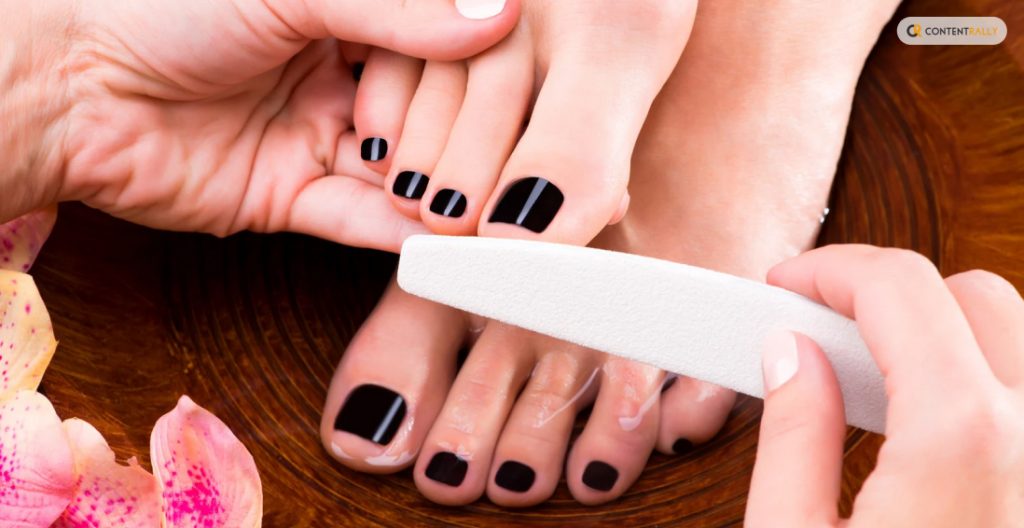
Pedicure sessions have specific benefits for sure. Some of these are apparent, and others are long-term gains. Here are the prime benefits you expect out of a pedicure:
Your Skin Health
Pedicures help to improve skin health. Hence your skin will immediately look fresher and youthful. It is the most significant outcome of the exfoliation process.
Better blood circulation
If you want better massage and foot care during pedicures, go for a classic and a stone treatment. What is pedicure? It is the mere exfoliation of the skin so that it respires better.
Meanwhile, blood circulation through and around the cutaneous players also improves. It keeps the skin fresh and youthful as well.
Exfoliation
A pedicure is the best way to remove dead cells from the two upper layers of the skin. Hence, it prevents skin infection since all toxins are given away.
Stress relief
The pedicure process releases endorphins. Hence, you feel calm and breezy. Meanwhile, your feet feel relaxed as the blood circulation improves.
Other Benefits
There are other benefits of pedicure, too. Most importantly, it can resolve foot odor issues. At the same time, it can release muscle tension and cure back pain to some extent.
What to Expect During a Pedicure
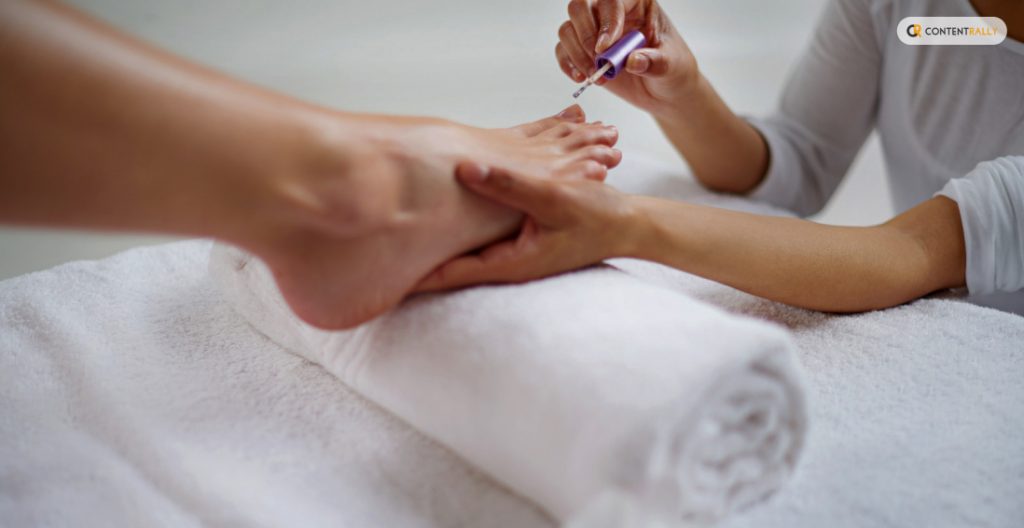
Let’s see what makes up a classic pedicure session. What is a pedicure? It is the treatment of your skin. There are 6 to 7 basic steps of this treatment. It starts with soaking your feet in warm, lather-rich water. Consequently, your nails and the skin of your feet will become mushy.
After that, it is time for exfoliation. The process involves using a foot tile to remove the upper dead skins. Thirdly, pedicure involves nail care, too. Most importantly, the trimming, filing, buffing, etc. Moreover, there is cuticle work to be done.
The last three steps are:
- Moisturizing
- Massaging, and
- Polishing
The process lasts between 30 to 90 minutes. However, there are two types of pedicure treatment. These are basic and luxurious. Other than small detailing like nail shaping, gel polishing, and cuticle work, the rest is the same for luxury treatment.
How much does a pedicure cost?
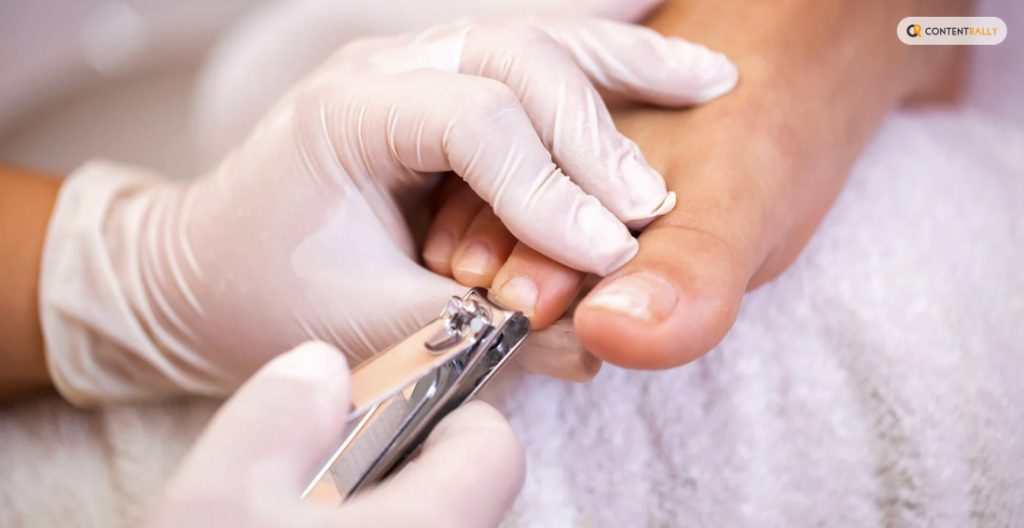
In the US, the cost of pedicure might vary. It may range from $20 to $75. However, the average price of a basic pedicure from a standard salon would be $45.
It is also apparent that the salon brand and location would be reasons for variation in the prices of the same pedicure services.
DIY Pedicure at Home

A DIY pedicure is easy. However, you need to prepare the ingredients from scratch using natural elements when you do it first. After that, you can reuse the same products and save time and resources.
To do the same, you need a natural scrub first. A pumice stone can be one. It can substitute cosmetic foot scrubs. But the treatment should start the same way it does in any salon.
Firstly, soak your feet in a bucket or tumbler. Combining lukewarm water, Epsom salts, and a few drops of essential oils. Remember, what is pedicure? It treats the external skin and blood vessels on the inner lining. So, a home pedicure can be as effective as a salon treatment.
Just use the proper steps and a set of the right organic ingredients.
Done with soaking? Apply Pumice stone for natural foot scrubbing. Once done, just trim your toenails and push back the cuticles. Finally, apply a base coat to the nails. Any nail color would do. At the end, apply the topcoat. While applying it, you should check out the best ombre nail designs 2024 ideas.
Flaunt your best nails before Christmas!
Massage the feet with moisturizer, lotion, or oil to finish the process.
Choosing the Right Salon
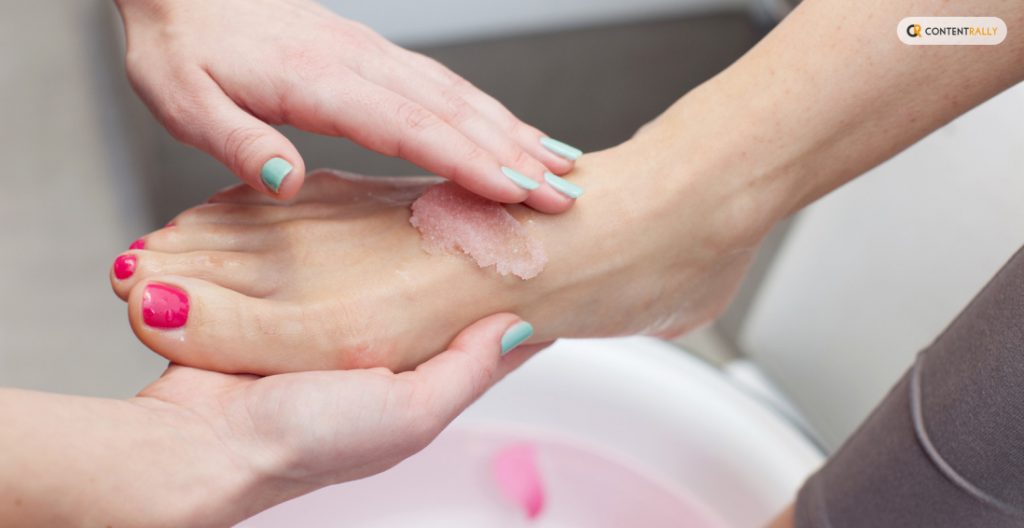
Finding the right salon for a pedicure can give you a heck of a time. So, keep this basics in mind when selecting one:
1. Ask friends and family members for recommendations. Meanwhile, check the ratings, reviews, and recommendations for that salon on local community groups.
2. Read customer reviews and expert opinions of the listed salons.
3. Most importantly, know your budget. The services that cost $30 at your local salon might cost you $150 at Bastian Gonzalez. So, choose wisely.
4. Book an experienced nail technician. Novices may often do it wrong, causing nail infections and plumps.
5. Hygiene is the first thing you should check when you visit any nail salon. Meanwhile, check the cleanliness as well.
Common Myths About Pedicures
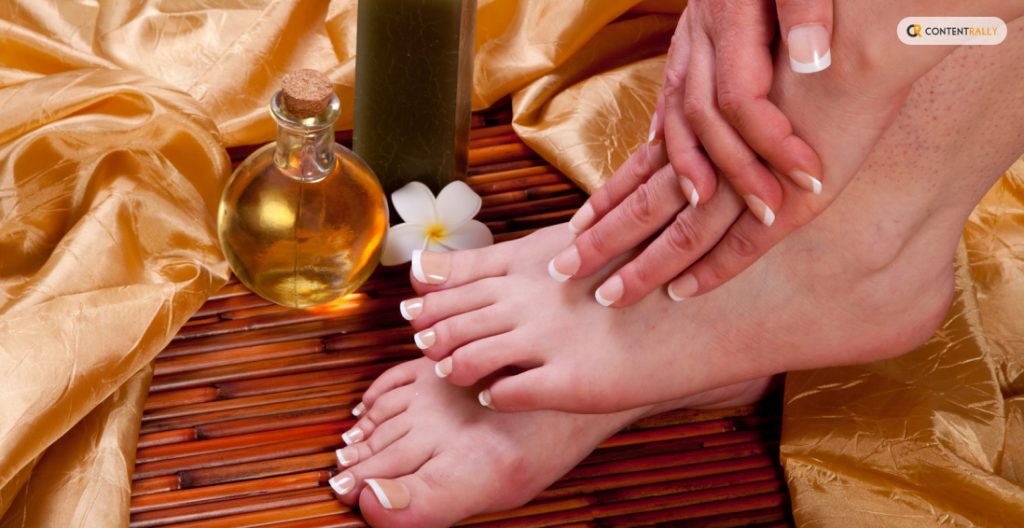
Go, get your pedicure done in a sweep. Many people don’t know what is pedicure. They often create or spread false rumors about the process. I’ve heard people say paraffin pedicure is for people with dry feet and heavy skin barriers. However, it is a process that benefits anybody.
Secondly, knowing that a stone pedicure is for relaxation only gives me a good laugh. However, the truth is that it can relax your whole body. It can also relieve you from muscle and bone-related diseases.
Don’t Go for a Professional Pedicure! I won’t say that ever. However, it is one of the most outstanding rumors about pedicure. Just ignore such small talk! Meanwhile, enjoy your pedicure session. Also, let me know your experience at your local salon.
We will survey who has the best salons in their area. Share the article and ask people to comment on the same too.
Read Also:













